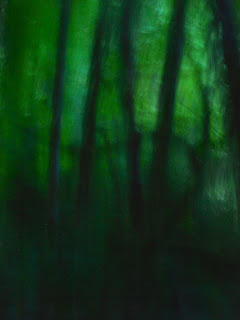The Dusk Series, Oregon
These images were taken in an Old Growth Forest on the
slopes of Oregon’s Coastal Range, near a town called--evocatively if
unfortunately this summer--Burnt Woods. Marguerite and I were on a
collaborative retreat sponsored by Oregon State’s Spring Creek Project for
Ideas, Nature, and the Written Word; we spent two weeks writing, taking
pictures, eating marion berries, and drinking Pinot Gris at the Cabin at
Shotpouch Creek, which hunkers into a clearing in the forest.
The dusk pictures illustrate the goal of the project’s
founder, Franz Dolp, who wanted to bring writers and artists to the forest to help
“reimagine the relationship of human beings to the natural world.” The images
capture the movement, or adjustment, of mind and imagination when confronted
with something beyond itself, bigger than itself. They’re not just
representations of what was seen, but of the meeting between seen and
imagined--the place where eye meets mind. Or where the human eye meets the
nonhuman “other”--in this case, a bloody big forest, at dusk.
For the ancient Celts, dusk was the beginning of the
day, a time of possibility and maybe danger. Dusk offered the 24-hour cycle its
thinnest space: a moment when different worlds overlapped and became
porous. The Celts understood these
worlds to be literal--the known space of human interaction and the less known
world of spirits, and the dead. I read dusk metaphorically. In the words of
Ciara Healy, who curated an exhibition called “Thin Space” in Wales earlier
this year, thin spaces like dusk might be moments when “we are capable of
inhabiting more than one world-view at the same time.” And that was Franz’s
goal in a nutshell. Enjoy the images. As usual, they're straight digital shots, unmanipulated in any way--I just moved the camera.
















